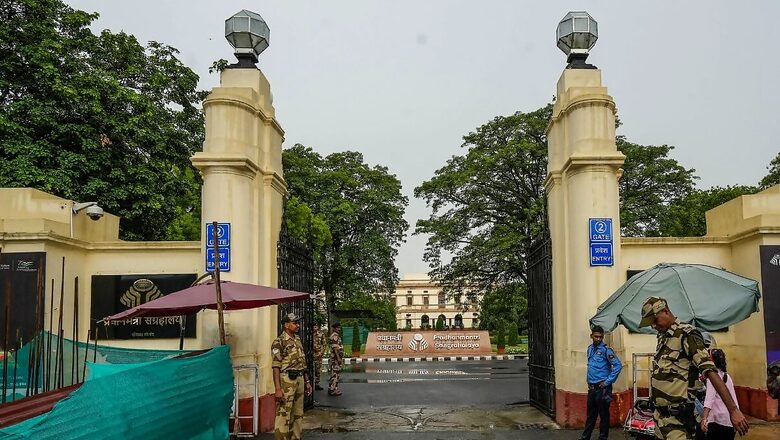From Memorial for Nehru to Museum for All Prime Ministers: Know All About Pradhanmantri Sangrahalaya

views
The famous Nehru Memorial Museum and Library at Delhi’s Teen Murti Bhavan complex was renamed as the ‘Prime Ministers’ Museum and Library Society’ on Friday to mark 75 years of India’s independence. Defence minister Rajnath Singh, who is the vice-president of the NMML Society, approved the new name at a special meeting.
The Nehru Memorial Museum and Library (NMML) is an autonomous institution fully funded by the ministry of culture. It is a premier institution for research on Indian history and society of the modern and contemporary period, located inside the Teen Murti Complex in Delhi.
It was designed by Robert Tor Russel and built in 1929-30 as part of Edwin Lutyens’ imperial capital. After independence, on the 75th birth anniversary of India’s first prime minister Jawaharlal Nehru on November 14, 1964, the then president S Radhakrishnan inaugurated the museum.
After the museum, the library was constructed in 1966 and formally inaugurated in 1974. Initially, the library was established in the western wing and the museum in the eastern wing of the Teen Murti Bhavan but looking at the rapid growth of research material, a new library building was constructed and was inaugurated by then president VV Giri in 1974.
An annex building was completed in 1989 to store more research material. Thereafter in 1990, the Centre for Contemporary Studies was set up inside the building.
On April 1, 1966, the central government established the Nehru Memorial Museum and Society to manage the institution, registered under the Societies Registration Act, 1860. At present, it is a 29-member society. On February 6, 1984, former prime minister Indira Gandhi inaugurated the Nehru Planetarium within the premises of the Teen Murti Bhavan.
In 2016, PM Narendra Modi mooted the idea of setting up a museum dedicated to all the prime ministers of India. The executive council of the NMML approved the construction of the museum of all prime ministers in the Teen Murti complex on November 11, 2016.
The construction of the Prime Ministers’ Museum was completed after four years in 2022 and Prime Minister Modi inaugurated the building on April 21 that same year.
How did Teen Murti Bhavan become the Nehru Memorial?
Earlier, Teen Murti Bhavan was the official residence of the British commander-in-chief in India. But after India’s independence, when the last commander-in-chief departed in 1948, it became the official residence of Nehru; he lived there for 16 years till his death.
It became the Nehru Memorial Museum as Radhakrishnan dedicated the Teen Murti Bhavan to the nation on Nehru’s 75th birth anniversary on November 14, 1964.
According to NMML former director Shakti Sinha, on August 9, 1968, the union cabinet had decided that the building should once again be home to the prime ministers of India. But that did not happen and it was agreed to be turned into a memorial for Nehru.
Legacy of Congress, Nehru-Gandhi Family
The grand old party Congress considers the Nehru Memorial Museum as an important legacy of the Nehru-Gandhi family. The Teen Murti Complex, where the museum is located, shows Nehru’s tenure as PM. It popularises his ideas and values.
On April 1, 1966, Indira Gandhi set up the Nehru Memorial Museum and Society to manage the institution and inaugurated the Nehru Planetarium. Also during the United Progressive Alliance (UPA) regime, former Congress chief Sonia Gandhi served as the chairperson of the NMML Society.
In Amrit Kaal, museum for all 14 prime ministers from Nehru to Modi
According to the government, the Teen Murti estate epitomises a story of continuity. It has been built to honour the contributions of all the 14 PMs of India since independence. The building is a narrative record of how each PM has contributed to the development of the nation over 75 years. It reflects the history of collective effort, who came from every class and tier of society, for the success of India’s democracy.
Modi while inaugurating the museum had said, “Pradhanmantri Sangrahalaya opens doors of knowledge, ideas, and experience for coming generations. Facing the challenges, every prime minister has tried to take the country forward. These are all things of public memory. If the youth and future generations know about the prime ministers, then they will get inspiration.”



















Comments
0 comment